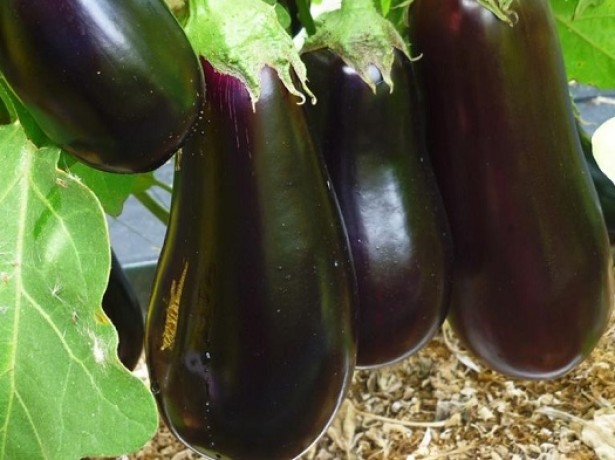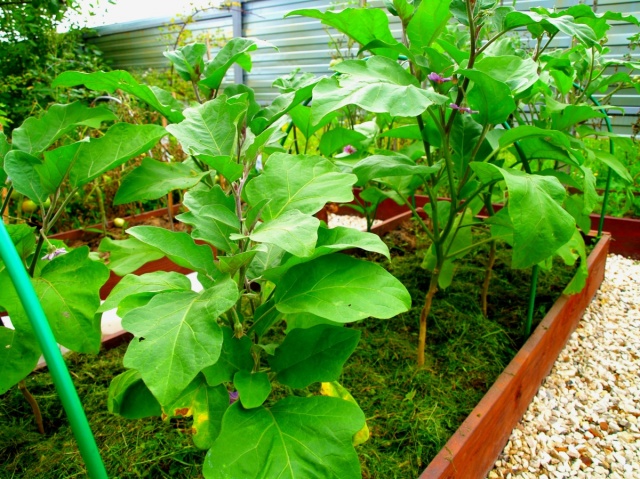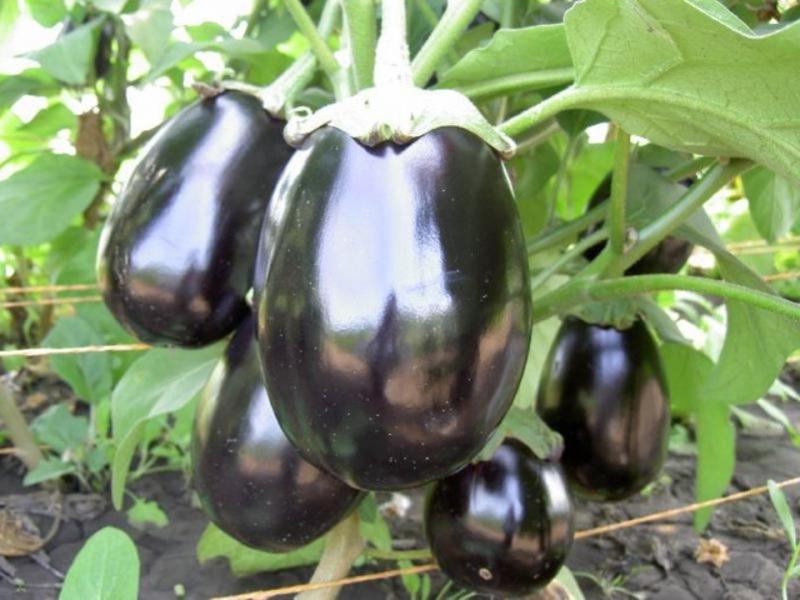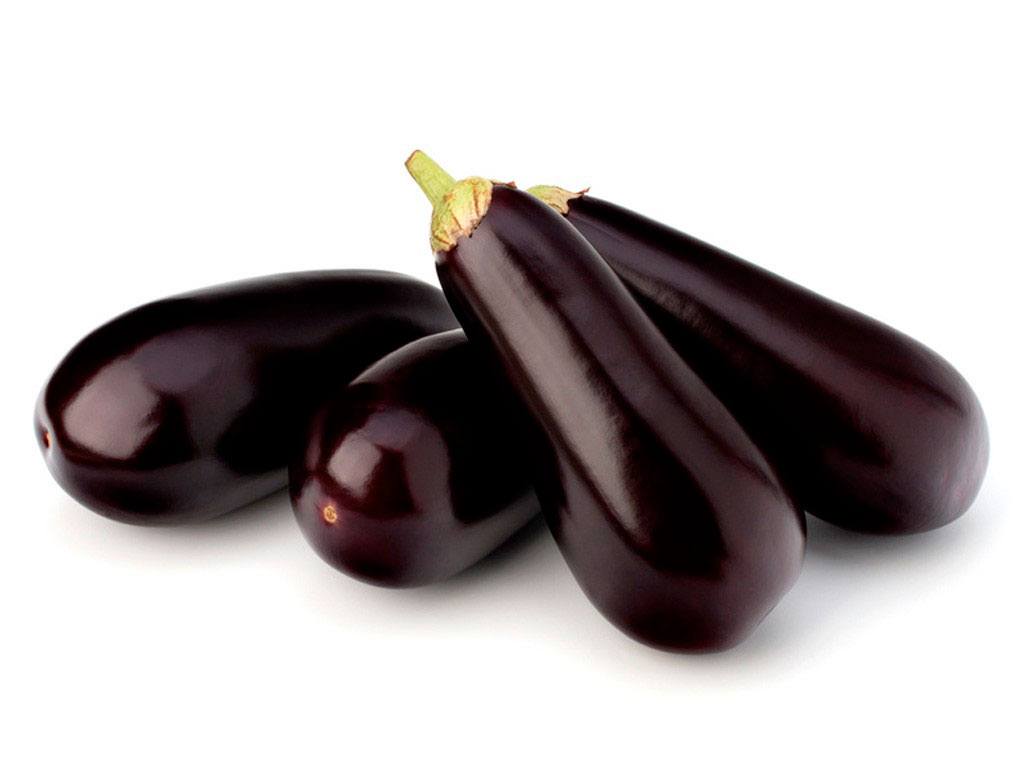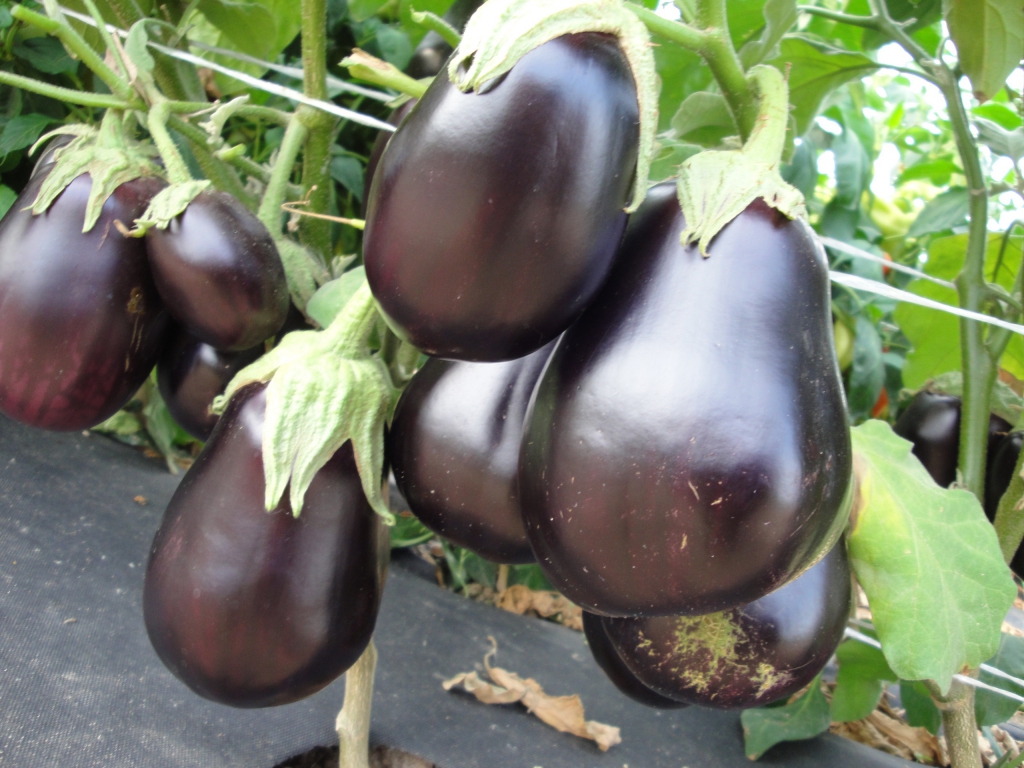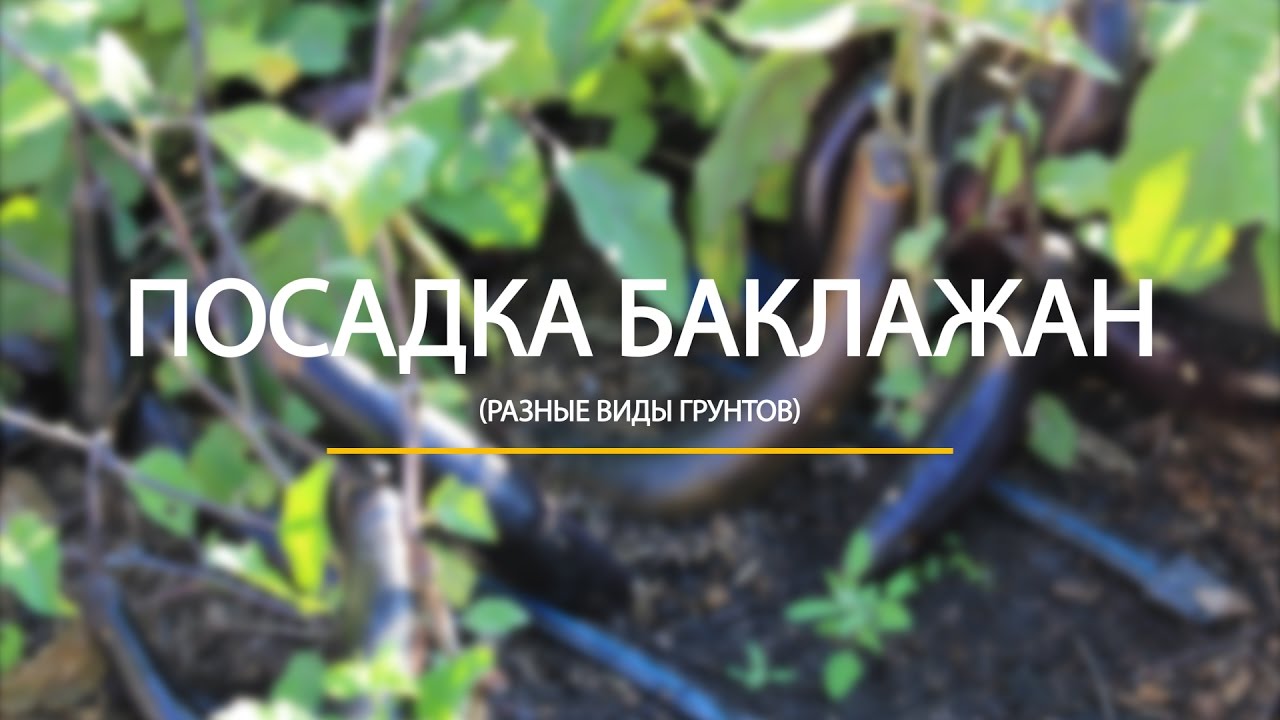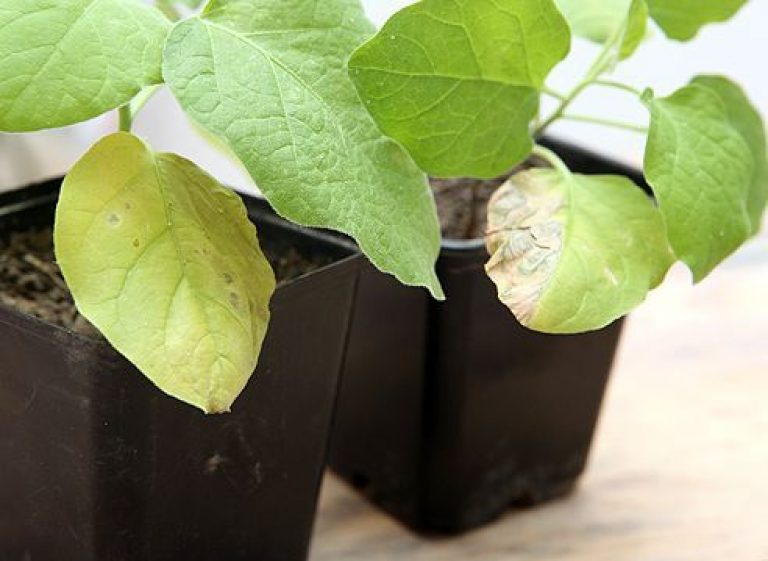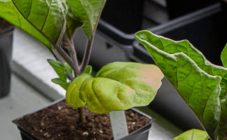Content:
Eggplant (dark-fruited nightshade) is a herbaceous perennial plant. Cultivated as an annual crop. In the south of the Russian Federation and the territory of Ukraine, they are called "blue". Plant height - up to 1.5 m. The leaves are large, rough, delicate. Monoecious flowers - male and female, are located on the same bush. Their size is up to 5 cm in diameter. Eggplants are: white, yellow, green, interspersed, purple. The shape of the fruit is oval, pear-shaped or round. The fruit is a berry, but in gastronomy it is ranked as a vegetable. Of the whole plant, only the fruit is suitable for food. The pulp is firm, with a lot of seeds. For food, it is better to use incompletely ripe eggplants, as then they coarse and lose their taste.
There are many varieties of dark-fruited nightshade, which differ in color, shape, taste and ripening period.
The Almaz variety is well known to gardeners. It looks like a typical, unremarkable representative of eggplant. However, it is distinguished by such features as strong immunity to diseases, high fruiting and good taste. The Almaz variety was bred in the 80s in the USSR on the territory of Ukraine. In 1983 it was entered into the state register of the Russian Federation.
Characteristics and description of Almaz eggplant
Diamond is a short, neat, compact plant. Up to half a meter high. The shoots are highly branching, due to which many fruits are formed. Leaves are medium in size, alternate, wide, oval in shape, with greenish-lilac veins. Because of its size, it can be grown on the balcony.
Flowers are solitary, monoecious, light purple. On green petioles. Sepals are green-lilac, smooth, without coarse thorn-like outgrowths, which facilitates harvesting. In eggplants, inflorescences of several flowers can form. They are located on the branches of the stem. Fertilized by self-pollination. Pollen grains are heavy, so it is advisable to carry out additional artificial pollination. One plant forms at least 5 ovaries.
Diamond is a type of eggplant, which belongs to mid-season varieties. The full cycle, from seedling to ripe fruit, is 4-5 months. The Black Diamond eggplant is characterized by a high yield. From 1 m² you can collect up to 8 kg of blue.
The fruit has a tubular or oval shape up to 18 cm long, up to 6 cm thick. The skin is thin, with gloss. The weight of one vegetable is about 140 g, it can reach 160 g. The inside of the fruit is slightly green, dense, without bitterness. Because of the color of the fruit, the variety is popularly called the Black Diamond eggplant. When fully ripe, the color is almost black, shiny. The fruits are already edible when their color becomes dark purple.
Diamond eggplant fruits are formed in the lower zone of the plant. This, on the one hand, makes harvesting easier. On the other hand, the fruits may come into contact with the ground. And this means that they will be polluted and infected with rot.
Eggplant Diamond is varietal, not hybrid. The seeds of the ripe fruit can be harvested and planted the next year. That is, you can engage in self-breeding of this variety.
This variety, depending on the climatic conditions, is cultivated outdoors and in the greenhouse.In warm areas, seedlings are planted in mid-May, in areas with late frosts - after their end.
It can withstand temperature extremes and drought.
Shows resistance to diseases: tobacco and cucumber mosaic virus, phytoplasmosis, wilting. Less resistant to fungal diseases: apical rot of fruits, fusarium, late blight.
The disadvantages include a large number of seeds in overripe fruits, the pulp coarsens. In addition, vegetables build up a toxin called solanine, which can cause food poisoning. Therefore, the fruits must be picked when they are still dark purple, and not nearly black.
Cultivation conditions
Eggplants love light to medium soil. It should be neutral or slightly acidic, rich in nitrogen and potassium fertilizers. The composition of the soil includes: sod land, coarse sand and peat. You can include humus or compost with added ash. They use loamy soil or chernozem. The potting mix should be loose.
This culture is demanding on moisture. With its shortage, the bushes grow worse, flowers fall off, the fruits are bitter. Despite the fact that Diamond is resistant to drought, it is better to water this plant more often during the flowering and fruit development period. Preferably at least once a week. Regular watering is also important for seedlings.
The air temperature during cultivation is approximately 25 ° C. With a cold snap, shoots can become bare, flowers fall off. Eggplants stop growing in heat.
Diamond, like other eggplants, is picky about lighting. This is a light-loving plant. However, daylight hours should be maximum 14 hours. Some gardeners, in order to withstand this regime, the rest of the time they are covered with a special material that does not allow light to pass through.
The air humidity for the comfortable existence of the diamond eggplant is 60%.
Care features
In addition to watering and daylight hours, Almaz needs weeding from weeds and loosening the top layer of soil. This is especially important when caring for seedlings.
For better plant growth, fertilizers are used. The first feeding with urea is carried out 3 weeks after planting the seedlings. A month later, the same fertilizer is applied with an admixture of superphosphate. When the fruits are formed, they are fed with diluted cow dung.
In the southern regions, Colorado beetles cause significant harm to eggplants. To prevent them, plants should be monitored, removing insects and their eggs. In case of strong colonization of the beetle, you can use insecticidal agents.
The soil around the eggplants is loosened. This improves soil aeration.
Growing
In a warm climate with early spring, mid-season eggplants are planted directly into the ground. It is better if these seeds have already been germinated or soaked in water. The soil temperature during planting should be at least 15 ° C. Planting pattern for seedlings 40 x 60 cm.
In areas with late frosts, the seedling method is recommended. Seeds are sown, calculating a period of about two months for further planting in a greenhouse or on the street. Seedlings are planted in open ground after the end of frost.
For sowing, they use prepared soil, which can be purchased in garden stores and prepared independently. For prevention, the soil must be disinfected in order to destroy pests, as well as bacterial and fungal diseases. The earth is calcined to 100 ° C or treated with boiling water. After the procedures performed, the slightly moist soil is left for a week to restore the natural microflora.
If varietal eggplant seeds are not granular, then they should also be disinfected. This can be done with a solution of potassium permanganate or hydrogen peroxide. Then they must be rinsed and dried. For quick germination, seeds are germinated for several days in gauze or cotton wool, moistened with water. The granules do not need to be soaked as their shell will dissolve.
Almaz eggplants do not tolerate diving well, so it is advisable to plant seeds immediately in separate pots or peat cups.
These vegetables are often planted in the same greenhouse with tomatoes, making sure that all plants have enough light. It is better not to combine with cucumbers, as they require more frequent watering, and eggplants can rot.
The opinions of gardeners about the need for pinching Almaz differ. In the southern regions, these actions are not necessary. In a temperate climate with a short summer season, pinching is carried out.
One way to do this process:
- All stepchildren are removed before branching.
- After the formation of 5 ovaries, the ends of the shoots are pinched.
- New flowers are cut off.
- The lower leaves should be removed so that when they come into contact with the soil, they do not become a breeding ground for infection.
Fruit collection stimulates flowering and the formation of new ovaries.
Advantages and disadvantages of the variety
- Diamond is characterized by a high yield. From 1 m² you can collect up to 8 kg of blue. Regular and long-term fruiting.
- It can withstand temperature extremes and drought.
- Shows high resistance to diseases: tobacco and cucumber mosaic virus, phytoplasmosis, wilting. Less resistant to fungal diseases: apical rot of fruits, fusarium, late blight.
- During storage they do not deteriorate for a long time and retain their taste.
- Good fruit transportability.
- They are widely used in cooking: fresh, fried or stewed, for canning.
The disadvantages include a large number of seeds in overripe fruits, the pulp coarsens.
The Almaz eggplant variety is suitable for cultivation, both for beginners and professionals. He is able to please any gardener who will pay due attention to him when growing.
